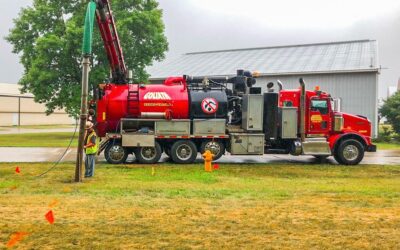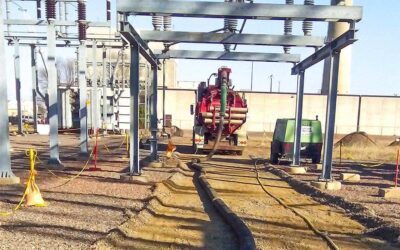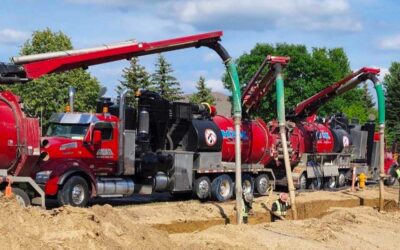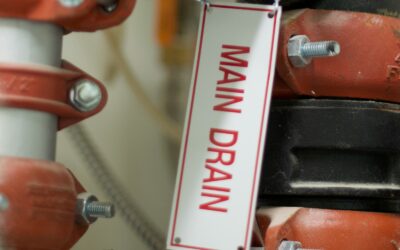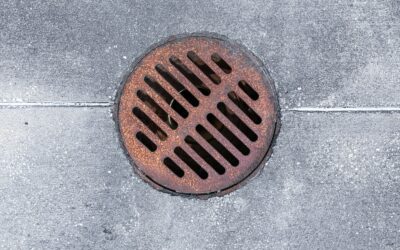How Deep Can You Hydrovac Excavate?
Hydrovac excavators come in many forms and are often custom-built for the companies ordering them. This means specific capabilities vary from rig to rig. One of those capabilities is depth, which makes answering the question, ‘How deep can a hydrovac excavator go?’, a bit tricky.
Here’s the short answer: at least 20 feet, and as much as 70 feet. But that range is so big, it’s probably not helpful to anyone with a specific project in mind. So, let’s break things down for a more detailed answer.
First, we’ll fly through the key components of hydrovac excavation equipment. Then we’ll examine what a typical high-power, high-capacity hydrovac truck is capable of, using the Goliath Vac fleet as an example.
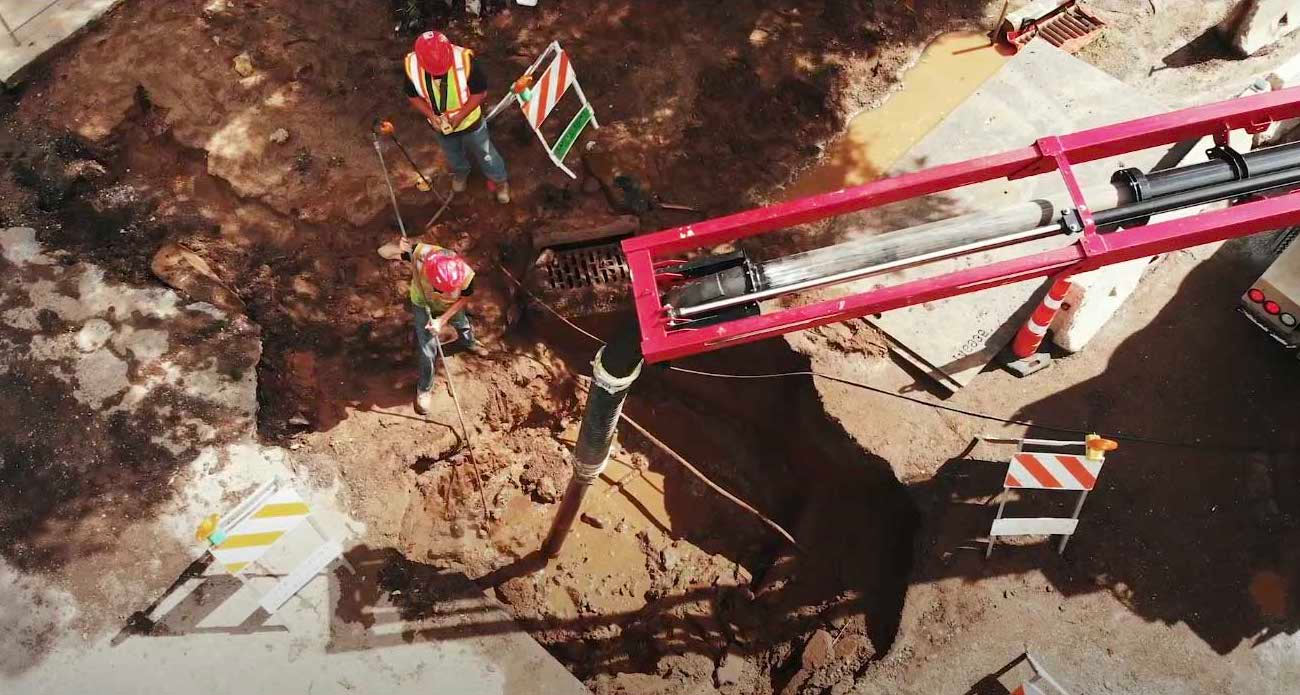
The Basics of Hydrovac Excavation
For an in-depth explanation of how hydrovac excavation works, you’ll want to check out our Hydrovac Excavation 101 post. There we take a deep dive into the process and its nuances, including safety concerns and hydrovac’s specific advantages over other excavation methods.
For the purposes of this article, we’ll keep things brief. Here are just the need-to-know facts for understanding hydrovac excavation.
What Is Hydrovac Excavation?
Hydrovac excavation is a method for removing soil with a combination of pressurized water and suction. Hydrovac excavation is typically accomplished with the aid of a hydrovac truck, where all the equipment is mounted for easy filling, dumping, and transport.
How Does Hydrovac Excavation Work?
A hose is used to direct a pressurized jet of water at the sediment. The combination of water and force quickly breaks apart the soil, creating a slurry. At the same time, a vacuum hose is positioned directly over the excavation site. This vacuum immediately sucks up the slurry, depositing it in a debris tank for later dumping.
What Gives Hydrovac Trucks Their Power?
Typically, the power source of a hydrovac truck is the vehicle’s own engine. That engine drives both the water pump, which pushes water out, and the vacuum pump, which pulls the slurry into the debris tank.
To be effective for excavation, both of these systems need to be quite powerful themselves. For example, the GapVax HV series trucks used by Goliath:
- Generate water pressure between 3,000 to 4,000 PSI. That’s up to 100 times more powerful than a standard garden hose.
- Move air at a rate of between 4,500 and 5,250 Cubic Feet per Minute (CFM). That’s around 500 times more powerful than a standard home vacuum.
Typically, these systems don’t need to be used at their maximum power. In fact, a lower power level is often preferable, particularly when preventing utility line damage is key. However, for the deepest excavations, the maximum force of these systems will be on full display.

Hydrovac Excavator Digging Depths
So, how deep can a hydrovac excavator actually dig? The most critical factors are a truck’s design, position, and the accessories the operator attaches.
Design and Specifications
To dig deeper than a few feet, a hydrovac excavation truck’s water system, vacuum system, and positioning all need to work in tandem. First, higher water pressure is required to dig deeper, so a water hose and spray nozzle that can withstand that higher pressure are necessary. Second, the vacuum hose must be long enough to reach the maximum desired depth. For this, positioning the truck as close as possible to the excavation site can help.
How Much Soil Can a Hydroexavation Truck Remove?
So long as the previous conditions are met, a hydrovac excavation truck should be able to excavate to depths of 20 or 30 feet and can even reach as far as 70 feet with the proper hose extensions. However, excavating to such depths will produce a large amount of soil slurry. This material can’t just be released anywhere; it needs to be taken to a pre-approved dumping site.
The hydrovac trucks used by Goliath have debris tanks ranging from 6 to 15 cubic yards. If, for example, you want to excavate a 10 ft x 10 ft x 20 ft area, that’s around 74 cubic yards of soil. When you add in the additional water volume, the largest tank would need to be dumped 6 to 7 times to complete the removal. So, when removing large amounts of soil with hydrovac excavation, the process is most efficient when a nearby dumping location is accessible.
How Long Can a Hydroexvacation Truck Go Before Running Out Of Water?
Another mitigating factor for deep excavation is the size of the water tank, as it takes more water to excavate more soil. The largest hydrovac excavation trucks have water tanks that hold 1000 gallons or more, allowing for 5 hours or more of continuous excavation. How much sediment is excavated in that time can vary, depending on soil types and conditions.
Get To The Bottom Of It With Goliath
At the end of the day, it’s always a good idea to talk with an expert directly if you have a specific project parameter in mind. So, while we hope this blog has answered your questions completely, we’re more than ready to discuss the subject further. We’ve got decades of experience as hydrovac excavators, so however depth you need to dig to, we’ve got the know-how to help make it happen. Just contact us today to get started!
RELATED POSTS
Hydrovac Excavation In The Winter: Cold Weather Digging
Do you believe that excavating in winter is more difficult, more expensive, and more time consuming? Is it...
What is Utility Potholing and Which Method is Best?
Utilities. They’re everywhere, enabling and protecting our comfortable, modern lives. Unfortunately,...
Hydro Vacuum vs Air Vacuum Excavation: Pros & Cons
At first glance, hydro vacuum excavation and air vacuum excavation are confusingly similar. After all, their...
Hydrovac Excavation 101: Everything You Need to Know
Hydrovac excavation has been around, in one form or another, for decades now. However, a lot of professionals...
Hydrovac Excavation vs. Traditional Excavator: Which Method Is Better?
On the surface, excavation couldn’t be simpler. Just…remove the dirt. However, the choice of excavation method...
Choosing the Right Industrial Sewer Maintenance Services
The maintenance of industrial sewer systems is a critical aspect of ensuring the smooth operation of any...
How to Prevent Industrial Sewer Blockages
Industrial sewer blockages are not just a minor inconvenience; they can be a major hazard with significant...
Importance of Regular Sewer Inspections
Industrial sewer inspections are a critical component of maintaining a facility's infrastructure. These...
Essential Industrial Sewer Maintenance Tips
Industrial sewer maintenance is a critical aspect of maintaining the efficiency and safety of any facility....
Benefits of Industrial Cleaning
Industrial Cleaning Benefits Keeping a clean and secure environment goes beyond mere appearance; it's a vital...


